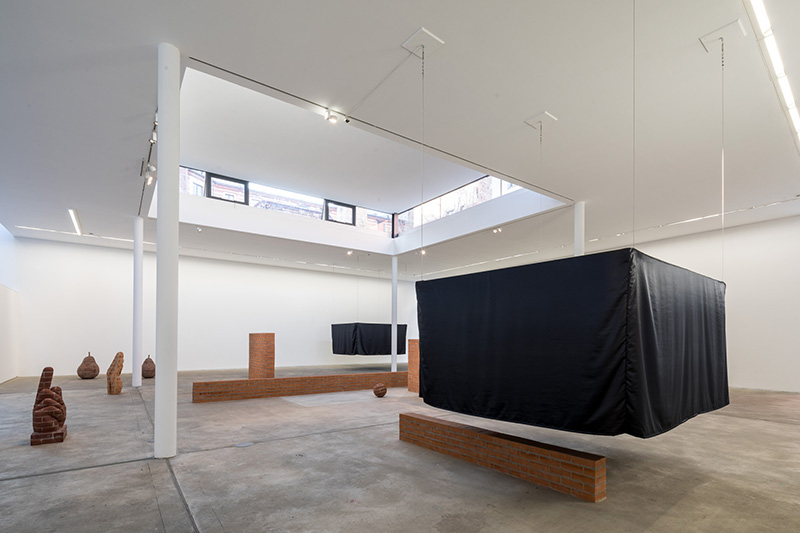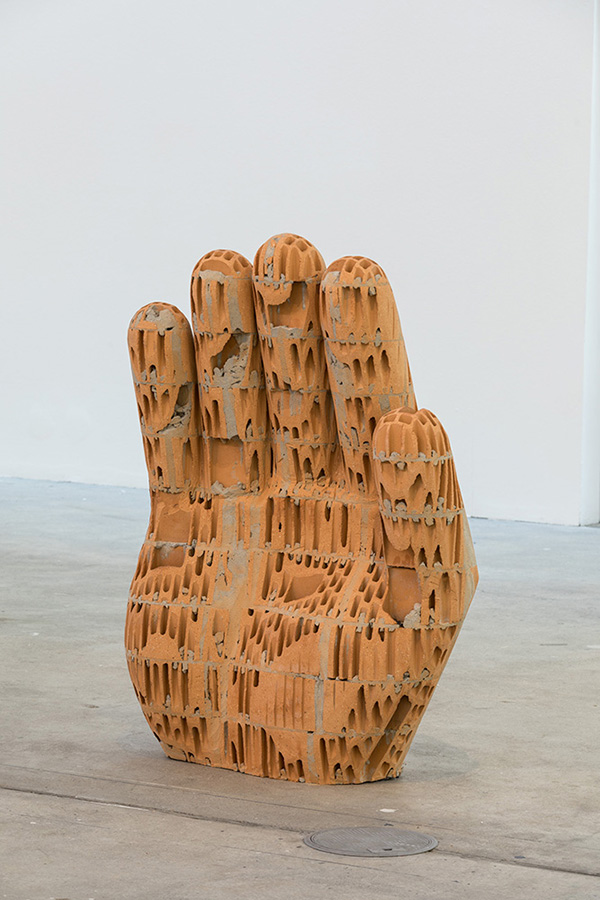ART CITIES:Berlin-Judith Hopf
 Since the 1990s, Judith Hopf has mastered an independent artistic language that unswervingly manages to stake out new ground, be it in the form of sculpture, film, drawing, performance, or stage design. Her iconic works are deeply rooted in the use of everyday materials, such as brick, concrete, glass, or packaging, and easily graspable manufacturing processes, employing them to investigate the social dynamics of our built environment and their influence on behavior, power dynamics, and social codes.
Since the 1990s, Judith Hopf has mastered an independent artistic language that unswervingly manages to stake out new ground, be it in the form of sculpture, film, drawing, performance, or stage design. Her iconic works are deeply rooted in the use of everyday materials, such as brick, concrete, glass, or packaging, and easily graspable manufacturing processes, employing them to investigate the social dynamics of our built environment and their influence on behavior, power dynamics, and social codes.
By Efi Michalarou
Photo: KW Institute for Contemporary Art Archive
Judith Hopf’s exhibition “Stepping Stairs” confronts the faceless creations of modern life by taking a closer look at the objects that shape our daily routine, whilst responding to the effect that advances in economics and technology have had on our bodies and mental compositions. The title “Stepping Stairs” derives from a text written by Hopf in which she recalls the moments where life feels like climbing upstairs against the flow of a descending escalator. In the exhibition, Hopf references two likeminded artists and inspirations: the American architect and architectural theorist John Hejduk (1929–2000), and the German artist, and former colleague of Hopf, Annette Wehrmann (1961–2010), identifying in both of their works an appeal to “chatter away against automatic knowledge in general and against greyness in particular”. For Hejduk, this is especially relevant in his Berlin Masque building complex in Berlin-Kreuzberg, while in Wehrmann’s case, Hopf sees this in her colorful and unruly “serpentine streamer”. The exhibition compiles a survey of Hopf’s practice by bringing together new commissions alongside older bodies of work. Upon entering, the visitor is greeted by a reworked group of Hopf’s laptop sculptures “Untitled (Laptop Men)” (2018) scattered across the lower ground floor. Abstract figures, like line drawings but made of sheet metal, are positioned in different everyday poses and appear to be seamlessly merged with the laptops they balance on their waists and knees. Shaped by what appears to be an over-use of technology, the sculptures assume a hybrid form situated somewhere between laptop and human being. Hopf makes a humorous reference to the way we depend on our devices and the growing tendency to perceive them as part of our bodies. The lingering gray bodies are framed by Hopf’s “Untitled (Email Lines)” (2016), three colored LED light chains suspended from the ceiling. They present a physical manifestation of the seemingly endless back and forth conversations that we carry around dematerialized on our devices. “Untitled (Email Lines)” questions how communication can be defined nowadays, especially in regards to the relationship between work and leisure, since both are widely pursued through the same device. The video “Lily’s Laptop” (2013) plays in a loop, a homage to the 1911 film Le Bateau de Léontine by Roméo Bosetti. The film shows the au pair Lily flooding the modernist home of her employers. To determine whether her laptop is able to swim, she turns on the faucets and leaves the household under water until all belongings are washed away in a slapstick-like gesture. For her installation in the main hall of KW, Hopf continues her recent fascination with bricks. The masoned brick works occupy a curious intermediary position that fluctuates between sculpture and exhibition-architecture, both dividing and augmenting the exhibition space. One encounters oversized brick hands. “Hand 1, 2, 3 & 4” (2016-17), brick balls “Ball in Remembrance of Annette Wehrmann” (2016), and a new series of pears “Birnen” (2018). In the older works, industrially fired bricks were formed into cubes, and then shapes were hewn out of them. Two films are housed in Hopf’s unique floating cinemas, black tent-like cloth structures hanging in the exhibition space, and which the audience must plunge into to enter. For the film “Türen” (2007, together with Henrik Olesen) Hopf and Olesen restaged a scene from Luis Buñuel’s film “Le Fantôme de la liberté” (1974) in which different doors open on to a variety of little vignettes that take place behind them. In her new film “OUT” (2018), we are faced with the question: How can one type of architecture enter another? Both films, like much of Hopf’s work, defy the conformity demanded by the need for perpetual progress, calling for resistance both through overt malleability and bulkiness as well as through the transferral of overly human qualities like stupor, embarrassment, stupidity, and exhaustion onto the objects she creates.
Info: Curator: Anna Gritz, Assistant Curator: Maurin Dietrich, KW Institute for Contemporary Art, Auguststraße 69, Berlin, Duration: 10/2-11/3/18, Days & Hours: Mon, Wed & Fri-Sun 11:00-19:00, Thu 11:00-21:00, www.kw-berlin.de


